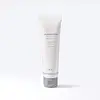What's inside
What's inside
 Key Ingredients
Key Ingredients

 Benefits
Benefits

 Concerns
Concerns

 Ingredients Side-by-side
Ingredients Side-by-side

Water
Skin ConditioningButylene Glycol
HumectantAlcohol
AntimicrobialEthylhexyl Salicylate
UV AbsorberHomosalate
Skin ConditioningDibutyl Adipate
EmollientBis-Ethylhexyloxyphenol Methoxyphenyl Triazine
Skin ConditioningCyclopentasiloxane
EmollientMethylene Bis-Benzotriazolyl Tetramethylbutylphenol
UV FilterPolysilicone-15
UV FilterDiethylamino Hydroxybenzoyl Hexyl Benzoate
UV FilterCentella Asiatica Extract
CleansingPortulaca Oleracea Extract
Skin ConditioningHouttuynia Cordata Extract
Skin ConditioningPearl Extract
AntioxidantCaulerpa Lentillifera Extract
Sea Water
HumectantUndaria Pinnatifida Extract
Skin ConditioningEcklonia Cava Extract
Skin ConditioningEnteromorpha Compressa Extract
Skin ProtectingLaminaria Japonica Extract
Skin ProtectingCodium Fragile Extract
Skin ConditioningCeteth-10
EmulsifyingTromethamine
BufferingDecyl Glucoside
CleansingAcrylates/C10-30 Alkyl Acrylate Crosspolymer
Emulsion StabilisingCarbomer
Emulsion StabilisingCaprylic/Capric Triglyceride
MaskingCetyl PEG/PPG-10/1 Dimethicone
EmulsifyingPropanediol
SolventPropylene Glycol
Humectant1,2-Hexanediol
Skin ConditioningXanthan Gum
EmulsifyingSodium Hyaluronate
HumectantSodium Acetylated Hyaluronate
HumectantEthylhexylglycerin
Skin ConditioningHydrolyzed Hyaluronic Acid
HumectantParfum
MaskingPhenoxyethanol
PreservativeButylphenyl Methylpropional
PerfumingLinalool
PerfumingWater, Butylene Glycol, Alcohol, Ethylhexyl Salicylate, Homosalate, Dibutyl Adipate, Bis-Ethylhexyloxyphenol Methoxyphenyl Triazine, Cyclopentasiloxane, Methylene Bis-Benzotriazolyl Tetramethylbutylphenol, Polysilicone-15, Diethylamino Hydroxybenzoyl Hexyl Benzoate, Centella Asiatica Extract, Portulaca Oleracea Extract, Houttuynia Cordata Extract, Pearl Extract, Caulerpa Lentillifera Extract, Sea Water, Undaria Pinnatifida Extract, Ecklonia Cava Extract, Enteromorpha Compressa Extract, Laminaria Japonica Extract, Codium Fragile Extract, Ceteth-10, Tromethamine, Decyl Glucoside, Acrylates/C10-30 Alkyl Acrylate Crosspolymer, Carbomer, Caprylic/Capric Triglyceride, Cetyl PEG/PPG-10/1 Dimethicone, Propanediol, Propylene Glycol, 1,2-Hexanediol, Xanthan Gum, Sodium Hyaluronate, Sodium Acetylated Hyaluronate, Ethylhexylglycerin, Hydrolyzed Hyaluronic Acid, Parfum, Phenoxyethanol, Butylphenyl Methylpropional, Linalool
Water
Skin ConditioningDicaprylyl Carbonate
EmollientButylene Glycol
HumectantDibutyl Adipate
EmollientDiethylamino Hydroxybenzoyl Hexyl Benzoate
UV FilterHydrogenated Polyisobutene
Emollient1,2-Hexanediol
Skin ConditioningGlycerin
HumectantNiacinamide
SmoothingEthylhexyl Triazone
UV AbsorberPolyglyceryl-3 Methylglucose Distearate
EmulsifyingSilica
AbrasiveCetearyl Olivate
Cetearyl Alcohol
EmollientSorbitan Olivate
EmulsifyingGlyceryl Stearate Se
EmulsifyingMethyl Glucose Sesquistearate
EmollientSorbitan Stearate
EmulsifyingPanthenol
Skin ConditioningBeta-Glucan
Skin ConditioningDisodium EDTA
Citrus Junos Fruit Extract
Skin ConditioningAdenosine
Skin ConditioningSodium Hyaluronate
HumectantAnthemis Nobilis Flower Oil
MaskingHippophae Rhamnoides Oil
EmollientCaprylyl Glycol
EmollientEthylhexylglycerin
Skin ConditioningTocopherol
AntioxidantAllantoin
Skin ConditioningCitrus Aurantium Dulcis Oil
MaskingWater, Dicaprylyl Carbonate, Butylene Glycol, Dibutyl Adipate, Diethylamino Hydroxybenzoyl Hexyl Benzoate, Hydrogenated Polyisobutene, 1,2-Hexanediol, Glycerin, Niacinamide, Ethylhexyl Triazone, Polyglyceryl-3 Methylglucose Distearate, Silica, Cetearyl Olivate, Cetearyl Alcohol, Sorbitan Olivate, Glyceryl Stearate Se, Methyl Glucose Sesquistearate, Sorbitan Stearate, Panthenol, Beta-Glucan, Disodium EDTA, Citrus Junos Fruit Extract, Adenosine, Sodium Hyaluronate, Anthemis Nobilis Flower Oil, Hippophae Rhamnoides Oil, Caprylyl Glycol, Ethylhexylglycerin, Tocopherol, Allantoin, Citrus Aurantium Dulcis Oil
 Reviews
Reviews

Ingredients Explained
These ingredients are found in both products.
Ingredients higher up in an ingredient list are typically present in a larger amount.
1,2-Hexanediol is a synthetic liquid and another multi-functional powerhouse.
It is a:
- Humectant, drawing moisture into the skin
- Emollient, helping to soften skin
- Solvent, dispersing and stabilizing formulas
- Preservative booster, enhancing the antimicrobial activity of other preservatives
Butylene Glycol (or BG) is used within cosmetic products for a few different reasons:
Overall, Butylene Glycol is a safe and well-rounded ingredient that works well with other ingredients.
Though this ingredient works well with most skin types, some people with sensitive skin may experience a reaction such as allergic rashes, closed comedones, or itchiness.
Learn more about Butylene GlycolDibutyl Adipate is an emollient and solvent. It is created from butyl alcohol and adipic acid.
As a solvent, Dibutyl Adipate helps mix and disperse ingredients evenly.
Dibutyl Adipate is soluble in water and organic solvents. It does not absorb UV rays.
Learn more about Dibutyl AdipateDiethylamino Hydroxybenzoyl Hexyl Benzoate (DHHB) is a chemical UV-A absorber. It is formulated for high UVA protection (320-400 nm).
DHHB is well-liked for:
DHHB has been approved by the EU, Japan, Taiwan, and South America for use up to 10%. Unfortunately, it has not been approved for use in the US or Canada due to slow regulatory processes.
This ingredient is soluble in oils, fats, and lipids.
Learn more about Diethylamino Hydroxybenzoyl Hexyl BenzoateEthylhexylglycerin (we can't pronounce this either) is commonly used as a preservative and skin softener. It is derived from glyceryl.
You might see Ethylhexylglycerin often paired with other preservatives such as phenoxyethanol. Ethylhexylglycerin has been found to increase the effectiveness of these other preservatives.
Sodium Hyaluronate is hyaluronic acid's salt form. It is commonly derived from the sodium salt of hyaluronic acid.
Like hyaluronic acid, it is great at holding water and acts as a humectant. This makes it a great skin hydrating ingredient.
Sodium Hyaluronate is naturally occurring in our bodies and is mostly found in eye fluid and joints.
These are some other common types of Hyaluronic Acid:
Learn more about Sodium HyaluronateWater. It's the most common cosmetic ingredient of all. You'll usually see it at the top of ingredient lists, meaning that it makes up the largest part of the product.
So why is it so popular? Water most often acts as a solvent - this means that it helps dissolve other ingredients into the formulation.
You'll also recognize water as that liquid we all need to stay alive. If you see this, drink a glass of water. Stay hydrated!
Learn more about Water